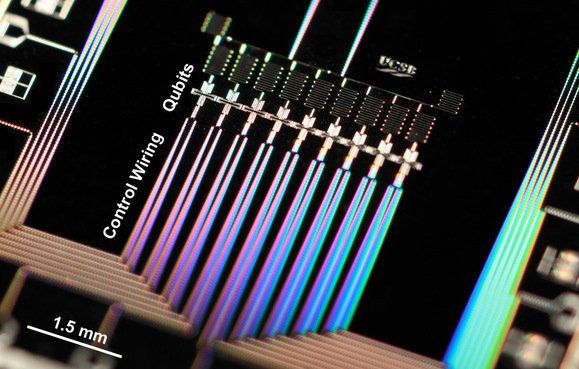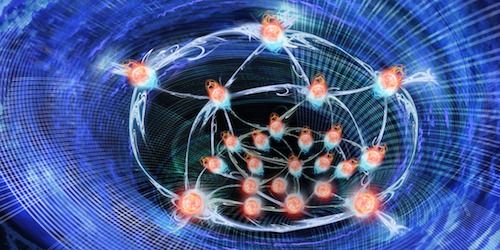Shoegazer, a prototype sneaker-spotting app, demonstrates the ways artificial intelligence could change how we shop.
Get the latest international news and world events from around the world.

Minimum Interstellar Precursor Mission
With the continuous advancements in nano-satellite technology, there has been a significant increase in proposed CubeSat missions for sophisticated space exploration. Due to their cost efficiency, rapid development and ongoing miniaturization of satellite bus systems and scientific payloads, CubeSats offer the potential to increase the range of capabilities of deep space explorations. Missions already on launch manifests such as Mars Cube One, Lunar Flashlight, and NEA Scout will demonstrate the use of CubeSat technology for planetary explorations. CubeSat capabilities are also being expanded for other deep space missions and for the detection technique of Near Earth Objects (NEOs). With the increase in anticipated that CubeSats will increasingly become an attractive option to conduct cost-effective interplanetary missions. This increase in interest and development allows further advancement of Technology Readiness Level (TRL) of the present technology, which can be extrapolated for extra-solar and near interstellar missions. The work presented in this paper addresses the potential utilization for interplanetary and near interstellar missions using technology developed from off-the-shelf components. The paper introduces the current CubeSat technologies, their baselines TRLs, and the requirements needed to conduct such missions. It further presents the feasibility study of the available CubeSat technology to conduct near interstellar mission by the year 2030. The feasibility of different propulsion, communication, electrical and power subsystems with a TRL level of 5 and higher in the next 10 years is evaluated. This paper outlines the fundamental mission and spacecraft architecture required to exit the solar system using miniaturized space system technologies. The analysis and suggestions presented in this paper help recognize the resourcefulness of CubeSat for interplanetary and the edge of the solar system missions.


From Bitcoin to puke-tracking: Walmart uses blockchains to monitor food — By Beth Mole | Ars Technica UK
“In October, the commercial giant teamed up with IBM and Tsinghua University in Beijing to track pork in China as it moves from the farm to the shelves.”

Microsoft ‘doubles down’ on quantum computing hardware focus
Microsoft is accelerating its efforts to make a quantum computer as it looks to a future of computing beyond today’s PCs and servers.
Microsoft has researched quantum computing for more than a decade. Now the company’s goal is to put the theory to work and create actual hardware and software.
To that effect, Microsoft has put Todd Holmdahl—who was involved in the development of Kinect, HoloLens, and Xbox—to lead the effort to create quantum hardware and software. The company has also hired four prominent university professors to contribute to the company’s research.

Synopsis: Quantum Droplets Swell to a Macrodrop
Experiments with ultracold magnetic atoms reveal liquid-like quantum droplets that are 20 times larger than previously observed droplets.
Ultracold atoms can exhibit quantum behavior that mimics superfluids and superconductors. Tuning the atom-atom interactions can also reveal never-before-seen phases of matter. Following this approach, researchers working with magnetic atoms in a cigar-shaped trap have generated a single liquid-like macrodroplet, containing 20 times more atoms than in previously observed droplets. The experiment demonstrates that the stability of these droplets is due to quantum fluctuations.
When trapped atoms are cooled to near absolute zero, they form a Bose-Einstein condensate (BEC), in which their wave functions become coherent. The BEC is a macroscopic quantum object, but some of its quantum behaviors (such as quantum fluctuations) are difficult to observe because their effects are small compared to the mean-field interaction energy in this dilute system. For this reason, researchers are eager to reach parameter regimes where quantum fluctuations reveal themselves.


Fire up the atom forge
There is much to be learned from this process for other areas of technology.
Rethink electron microscopy to build quantum materials from scratch, urge Sergei V. Kalinin, Albina Borisevich and Stephen Jesse.

New Quantum States For Better Quantum Storage
Quantum and Crystalize formations for data storage.
How can you store quantum information as long as possible? A team from the Vienna University of Technology is making an important step forward in the development of quantum storage.
The memory that we use today for our computers differs only between 0 and 1. However, quantum physics also allows arbitrary superimpositions of states. On this principle, the “superposition principle”, ideas for new quantum technologies are based. A key problem, however, is that such quantum-physical overlays are very short-lived. Only a tiny amount of time you can read the information from a quantum memory reliably, then it is irretrievably lost.
At the TU Vienna is an important step forward has now succeeded in developing new quantum memory concepts. In collaboration with the Japanese telecommunication giant NTT, the Viennese researchers, under the direction of Johannes Majer, are working on quantum storage of nitrogen atoms and microwaves. Due to their different environment, the nitrogen atoms have all slightly different properties, as a result of which the quantum state “ruptures” relatively quickly. However, by specifically manipulating a small part of the atoms, it is possible to bring them into a new quantum state, which has a lifetime which is more than tenfold. These results have now been published in the journal “Nature Photonics”.